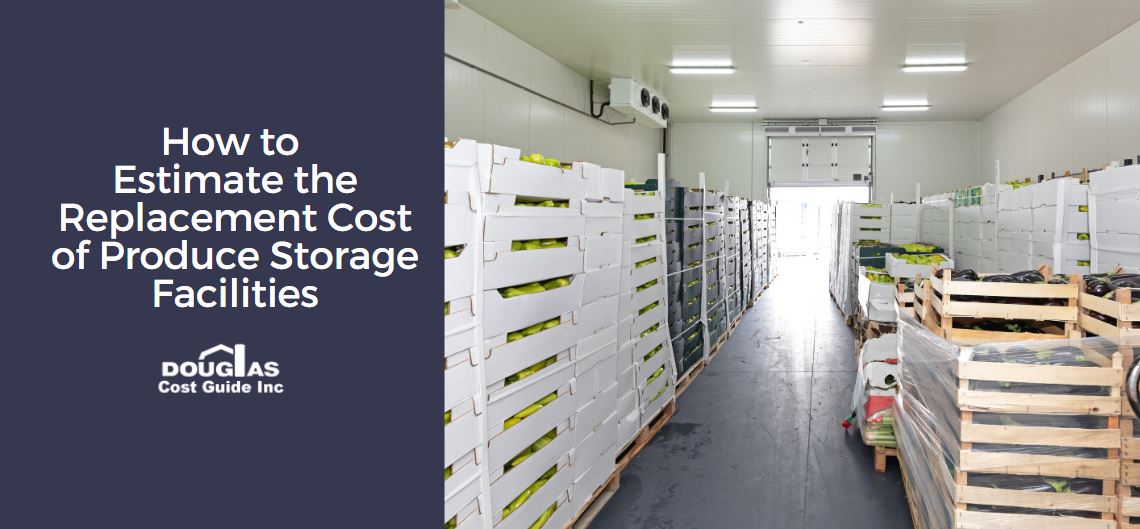Incorporating a produce storage facility continues to deliver lasting benefits for growers. The ability to maintain an inventory of locally grown carrots, onions, potatoes, fruits and other produce helps farmers level out annual workloads and tap into off-season premium pricing.
According to a recent survey, 79.5% of Canadians are willing to pay more for locally grown produce than imports. These are all excellent reasons to build and maintain a long-term produce storage facility. But when severe weather or a natural disaster damages these essential buildings, people in the agricultural sector often find it difficult to accurately estimate replacement costs. By using the Douglas Agricultural Cost Guide, farmers can generate a reliable estimate to replace a produce storage facility.
Estimating the Rebuild Cost of Produce Storage Facilities
It’s essential for people not necessarily in the construction trades to have a resource that simplifies the replacement cost process. The Douglas system offers users an online platform or hard copy version that starts with fundamental measurements, such as the following:
- Square footage
- Eave height
- Wall types including wood, pole, masonry, concrete and steel
By inputting these elements, the number of standard materials used in a replacement can be estimated. These and other central aspects of an agricultural structure, such as the thickness of a slab foundation, establish a base to weigh other cost factors. Produce storage facilities can differ significantly from other structures, and that’s why it’s crucial to also assign dollar amounts to specialized materials.
Factors Specific to Produce Storage Building Replacement
It’s not uncommon for produce storage facilities to mirror the designs of yesteryear root cellars. This means digging into a hill below the frost line or back-filling around the walls whenever possible to maximize energy efficiency. Such design elements also affect labour and material costs because heavy equipment must be brought to bear. Wall materials must stand up to ground pressure and decay, making cinder blocks, stone, and concrete pours among the best options. These are other items associated with produce storage buildings to consider:
- Climate Control Systems
- Fresh Air Circulation
- Insulation & Vapor Barriers
The wide-reaching design aspects of rebuilding a produce storage facility make it one of the more complex structures to estimate. Issues such as roof insulation and slabs strong enough to handle heavy equipment movement may require niche or additional materials. It’s also essential to keep in mind that updated health, food storage, and building codes could impact the cost of a rebuild.
Get Reliable Replacement Cost Estimates for Produce Storage Facilities
The Douglas Agricultural Cost Guide provides a valuable resource. Bringing more than 30 years of experience to the table, the Douglas system offers a user-friendly way to generate reliable replacement cost estimates. The Douglas Cost Guide is widely accepted as the gold standard by professionals in construction and insurance, among other key stakeholders.

